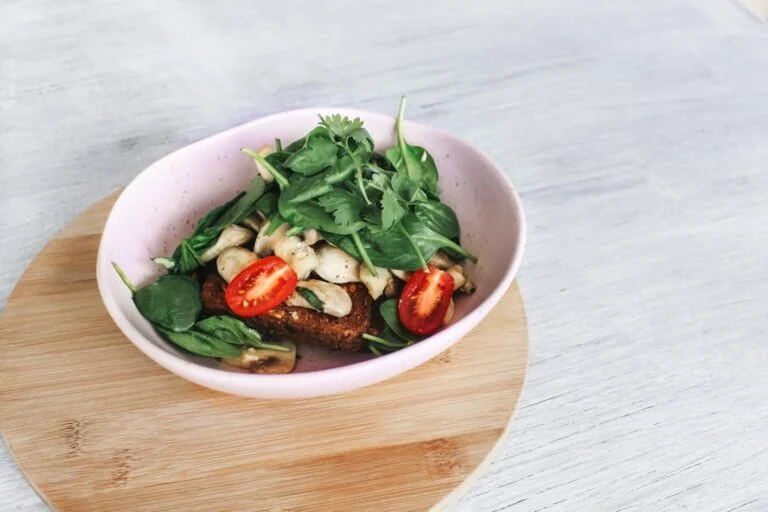Coca-Cola, a name synonymous with refreshment, has transcended its origins to become a global icon. The brand’s appeal lies not only in its classic formula but also in its ability to adapt and innovate, offering a plethora of unique flavours that cater to diverse palates around the world. From the original caramel sweetness of Coca-Cola Classic to the more adventurous variants like Cherry, Vanilla, and even regional specialties, the brand has successfully captured the essence of local tastes while maintaining its core identity.
This adaptability has allowed Coca-Cola to forge a deep connection with consumers, making it a staple in households across continents. The allure of Coca-Cola’s unique flavours is not merely about taste; it embodies a cultural exchange that reflects the preferences and traditions of various societies. The introduction of unique flavours has also played a pivotal role in Coca-Cola’s marketing strategy.
By tapping into local customs and preferences, the brand has managed to create a sense of belonging among consumers. For instance, in Japan, Coca-Cola has introduced flavours such as Green Tea and Peach, which resonate with the local palate and cultural practices. This strategic localization not only enhances brand loyalty but also fosters a sense of curiosity among consumers eager to explore new tastes.
As Coca-Cola continues to innovate and expand its flavour offerings, it remains committed to delivering experiences that resonate with people from all walks of life, reinforcing its position as a leader in the beverage industry.
Key Takeaways
- Coca-Cola’s unique flavours have a global appeal, with variations in taste and ingredients across different countries.
- The origins of Coca-Cola’s unique flavours can be traced back to the brand’s early days, with the use of natural ingredients and local preferences influencing the taste.
- Coca-Cola offers a diverse range of flavours in different countries, catering to local tastes and cultural preferences.
- The cultural significance of Coca-Cola flavours varies across regions, with certain flavours being associated with specific traditions and celebrations.
- Tasting and comparing Coca-Cola flavours from around the world can provide insights into the diversity of global palates and preferences.
Uncovering the Origins of Coca-Cola’s Unique Flavours
The journey of Coca-Cola’s unique flavours begins with its inception in the late 19th century. Originally formulated as a medicinal tonic by John Stith Pemberton in Atlanta, Georgia, the drink was intended to provide relief from various ailments. The original recipe included a blend of coca leaf extract and kola nuts, which contributed to its distinctive taste and energizing properties.
Over time, as the beverage gained popularity, the formula evolved, leading to the creation of various flavour profiles that would appeal to a broader audience. The introduction of additional ingredients and flavourings marked the beginning of Coca-Cola’s journey into the realm of unique flavours, setting the stage for future innovations. As Coca-Cola expanded its reach beyond American borders, it became increasingly aware of the need to cater to local tastes and preferences.
This awareness prompted the company to experiment with different flavour combinations that would resonate with consumers in various regions. The development of unique flavours was not merely a marketing gimmick; it was a strategic move aimed at understanding and embracing cultural nuances. By delving into local traditions and culinary practices, Coca-Cola was able to create flavours that felt familiar yet exciting to consumers.
This commitment to understanding the origins of its unique flavours has allowed Coca-Cola to maintain its relevance in an ever-evolving global market.
Exploring the Diverse Range of Coca-Cola Flavours in Different Countries

Coca-Cola’s diverse range of flavours is a testament to its ability to adapt and innovate in response to regional preferences. In Mexico, for instance, Coca-Cola offers a unique variant sweetened with cane sugar rather than high-fructose corn syrup, resulting in a taste that many enthusiasts claim is superior to its American counterpart. This subtle yet significant difference has led to a loyal following among consumers who appreciate the authenticity and quality associated with cane sugar.
Similarly, in countries like India, Coca-Cola has introduced flavours such as Maaza Mango and Thums Up, which cater specifically to local tastes and preferences. These regional adaptations not only enhance consumer satisfaction but also reinforce Coca-Cola’s commitment to celebrating cultural diversity. In addition to these well-known variants, Coca-Cola has also ventured into more experimental flavours that reflect local culinary traditions.
For example, in Japan, limited-edition flavours such as Wasabi and Cucumber have garnered attention for their boldness and creativity. These unique offerings not only pique consumer interest but also serve as a reflection of Japan’s adventurous culinary landscape. By embracing local ingredients and flavour profiles, Coca-Cola has successfully positioned itself as a brand that values innovation while respecting cultural heritage.
This exploration of diverse flavours underscores the brand’s dedication to providing consumers with experiences that are both familiar and novel.
The Cultural Significance of Coca-Cola Flavours in Various Regions
| Region | Popular Coca-Cola Flavours | Cultural Significance |
|---|---|---|
| North America | Classic, Cherry, Vanilla | Coca-Cola is a symbol of American culture and is often associated with nostalgia and traditional values. |
| Latin America | Cola, Fanta, Sprite | Coca-Cola is deeply ingrained in the social and cultural fabric, often being a part of celebrations and gatherings. |
| Asia | Lychee, Green Tea, Mango | Coca-Cola has adapted its flavours to suit local tastes and is often associated with modernization and globalization. |
| Europe | Orange, Lemon, Raspberry | Coca-Cola is seen as a symbol of youth and is often enjoyed as a part of socializing and leisure activities. |
Coca-Cola’s unique flavours often carry cultural significance that extends beyond mere taste. In many regions, these flavours are intertwined with local customs, celebrations, and social gatherings. For instance, in Brazil, the introduction of Guaraná-flavoured beverages has become synonymous with festive occasions and family gatherings.
The vibrant taste of guaraná not only reflects Brazil’s rich biodiversity but also serves as a reminder of the country’s cultural heritage. Similarly, in countries like Thailand, where tropical fruits are abundant, Coca-Cola has embraced local flavours such as Lychee and Coconut, creating beverages that resonate deeply with consumers’ identities and experiences. Moreover, Coca-Cola’s flavours often serve as a bridge between generations, fostering connections among family members and friends.
In many cultures, sharing a Coke during special occasions or everyday moments has become a cherished tradition. The act of enjoying these unique flavours together creates lasting memories and strengthens social bonds. As such, Coca-Cola’s diverse range of flavours transcends mere consumption; it becomes an integral part of cultural narratives that celebrate community and togetherness.
By recognizing and honoring these cultural significances, Coca-Cola continues to solidify its position as more than just a beverage brand—it becomes a symbol of shared experiences across the globe.
Tasting and Comparing Coca-Cola Flavours from Around the World
The experience of tasting and comparing Coca-Cola flavours from around the world is akin to embarking on a global culinary journey without leaving one’s home. Each variant offers a unique sensory experience that reflects the essence of its origin. For instance, tasting Mexican Coca-Cola reveals a crispness and sweetness that many aficionados argue is unmatched by other versions due to its cane sugar base.
In contrast, sampling Japanese flavours like Peach or Green Tea introduces an entirely different palate experience—one that is often lighter and more refreshing than traditional cola beverages. This diversity invites consumers to explore their preferences while appreciating the nuances that each flavour brings. Moreover, tasting events dedicated to exploring Coca-Cola’s global offerings have gained popularity among enthusiasts eager to broaden their horizons.
These events often feature blind tastings where participants compare various international flavours side by side, allowing them to discern subtle differences in sweetness, acidity, and overall mouthfeel. Such experiences not only foster camaraderie among participants but also encourage discussions about cultural influences on taste preferences. As consumers engage in this exploration of flavours, they develop a deeper appreciation for the artistry behind each variant and the stories they tell about their respective cultures.
The Impact of Globalization on Coca-Cola Flavours

Adapting to Changing Consumer Preferences
As the world becomes increasingly interconnected, consumer preferences and expectations regarding food and beverages are shifting. This phenomenon has prompted Coca-Cola to expand its portfolio beyond traditional offerings while remaining attuned to local tastes.
Innovative Flavor Combinations
The ability to source ingredients from different parts of the world allows for innovative flavor combinations that reflect global trends while still honoring regional identities. For instance, the rise of health-conscious consumers has led Coca-Cola to explore options like reduced-sugar variants and natural flavorings that cater to evolving dietary preferences.
Navigating Cultural Sensitivities and Regulations
Globalization also presents challenges for brands like Coca-Cola as they navigate cultural sensitivities and varying regulations across markets. What may be considered an appealing flavor in one region could be met with skepticism or disinterest in another. As such, Coca-Cola must strike a delicate balance between introducing new flavors that resonate globally while ensuring they remain relevant within specific cultural contexts. This ongoing dialogue between global trends and local traditions underscores the complexity of operating in an increasingly globalized marketplace—a challenge that Coca-Cola continues to embrace as it seeks to innovate while respecting its diverse consumer base.
The Future of Coca-Cola Flavours: Trends and Innovations
Looking ahead, the future of Coca-Cola’s flavours is poised for exciting developments driven by emerging trends and consumer demands. One notable trend is the growing emphasis on sustainability and health-conscious choices among consumers. As awareness surrounding environmental issues increases, there is a rising demand for beverages made from natural ingredients with minimal environmental impact.
In response, Coca-Cola is likely to continue exploring innovative flavour combinations derived from organic sources while reducing sugar content across its product lines. This shift not only aligns with consumer preferences but also positions Coca-Cola as a responsible player in the beverage industry. Additionally, technological advancements are set to play a crucial role in shaping the future of Coca-Cola’s flavour offerings.
With innovations in food science and flavor extraction techniques, the company can experiment with new combinations that were previously unattainable or impractical. Furthermore, advancements in data analytics allow for more precise market research, enabling Coca-Cola to identify emerging flavour trends before they reach mainstream popularity. By harnessing these technological advancements alongside consumer insights, Coca-Cola can continue to push boundaries while delivering unique flavours that resonate with audiences worldwide—ensuring its legacy as an iconic brand remains vibrant for generations to come.
If you’re interested in exploring unique Coke flavors from around the globe, you might enjoy reading an article that delves into the fascinating variety of tastes that Coca-Cola offers in different countries. From Japan’s seasonal Sakura flavor to South Africa’s Sparletta, the article provides a captivating look at how a global brand adapts to local tastes. Unfortunately, I don’t have a direct link to an article specifically about Coke flavors worldwide, but you can check out other interesting global topics and cultural insights at Just Tidings.
FAQs
What are some unique Coke flavours available around the world?
Some unique Coke flavours available around the world include Coca-Cola Orange Vanilla, Coca-Cola Peach, Coca-Cola Cinnamon, Coca-Cola Lime, and Coca-Cola Raspberry.
Where can I find these unique Coke flavours?
These unique Coke flavours are available in various countries around the world, and their availability may vary depending on the region. They can be found in grocery stores, convenience stores, and sometimes in specialty beverage shops.
Are these unique Coke flavours available in the United States?
Yes, some of these unique Coke flavours are available in the United States, while others may be exclusive to certain regions or available for a limited time only.
Are these unique Coke flavours permanent additions to the product line?
The availability of these unique Coke flavours may vary, and some may be limited-time offerings or seasonal releases. However, some flavours have become permanent additions to the product line due to their popularity.
Can I purchase these unique Coke flavours online?
Yes, some of these unique Coke flavours may be available for purchase online through various retailers and e-commerce platforms. However, availability may vary depending on the seller and the region.


















+ There are no comments
Add yours